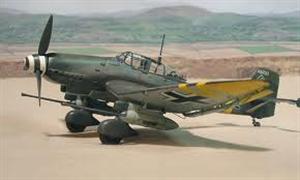German Bombers in WW2
German Bombers in WW2
German World War II bombers were first and foremost aggressive weapons, and they reflected the fundamental role of the Luftwaffe: tactical ground support.
Therefore these airplanes were designed primarily to fit this task. As such they were successful, but their failure became only too evident when they were required to perform other roles, for example strategic bombing. The Luftwaffe bombcarriers existed in two main types: relatively small but highly powered, well-armed, and maneuverable ground-attack aircraft (including shallow dive bombers) and medium bombers with a relatively short range, capable of delivering medium-sized bomb loads while at the same time being fast enough to elude enemy fighter interceptors.
Both types had range and payload that did not allow them to assume a worthwhile long-range strategic role.
 They were especially designed to meet the requirements of a short and aggressive Blitzkrieg—lightning war. Blitzkrieg tactics, a journalist’s descriptive term, was influenced by the trench warfare of World War I. The concept, drawn up by German military planners of the 1930s, was to bring rapid mobility to the battlefield. Tanks were concentrated into an offensive phalanx, supported by squadrons of bombers as flying artillery, and when driven against a defended line at a weak spot, they cracked it and then swept on to spread confusion in their wake. The tactics called for close cooperation between air and ground forces, and rested on surprise, concentration of force, and speed—speed of attack, speed of communication by radio, speed to exploit opportunities for advance.
They were especially designed to meet the requirements of a short and aggressive Blitzkrieg—lightning war. Blitzkrieg tactics, a journalist’s descriptive term, was influenced by the trench warfare of World War I. The concept, drawn up by German military planners of the 1930s, was to bring rapid mobility to the battlefield. Tanks were concentrated into an offensive phalanx, supported by squadrons of bombers as flying artillery, and when driven against a defended line at a weak spot, they cracked it and then swept on to spread confusion in their wake. The tactics called for close cooperation between air and ground forces, and rested on surprise, concentration of force, and speed—speed of attack, speed of communication by radio, speed to exploit opportunities for advance.
